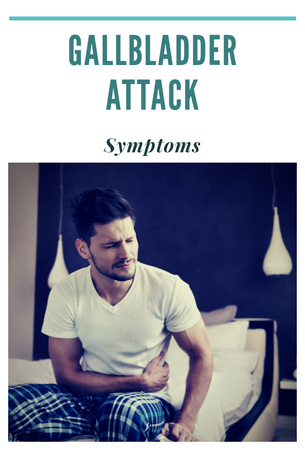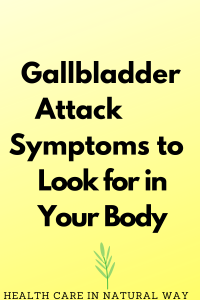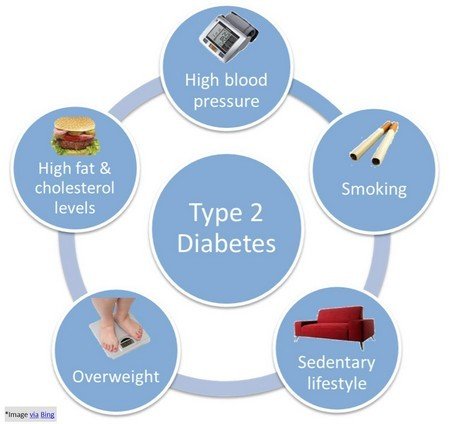The gallbladder is responsible for the production, storage, and transportation of bile, a yellowish-brown colored fluid produced by the liver. The fluid breaks up and digests fatty foods within the small intestine. The gallbladder can cause a number of conditions such as gallstones, gallbladder attacks, and gallbladder disease. Pain in the gallbladder is usually caused due to gallstones, biliary colic, cholecystitis, cholangitis, and pancreatitis. It is important for understanding gallbladder attack symptoms to keep it healthy and in perfect functioning condition.
Since the organ is not extremely essential for the human body; removal of the gallbladder in an otherwise healthy individual will not cause any apparent issues with health or digestion apart from a smaller risk of fat malabsorption and diarrhea.

Causes of a Gallbladder Attack
A gallbladder attack can be serious as it usually leads to sudden and severe pain. Those who have been diagnosed with gallstones should seek medical advice immediately. Others should get it checked through an ultrasound or CT scan. This can reveal any underlying condition causing pain and discomfort.
The most common causes of a gallbladder attack are the presence of gallstones. Some of the less common causes include:
– Bile duct tumors
– Gallbladder tumors
– Blockage of bile flow resulting in accumulation of bile in the gall bladder and pressure increase leading to rupture
– Other illnesses
Gallbladder Attack Symptoms you need to know

How does a gallbladder attack feel? Here are some common gallbladder attack symptoms you must watch out for:
A gallbladder attack will feel like a sharp pain. This is similar to being cut by a sharp object like a knife. You will feel the pain under the rib cage right at the center or upper right of the abdomen. In most cases, the pain is severe.
Some of the other common symptoms of a gallbladder attack include the following listed below:
– Sharp pain that lasts several hours
– Sharp pain in the abdomen after eating
– Yellowing of skin or whites of eyes
– Light-colored stool
– Nausea or vomiting
– Fever or chills
– Brownish-colored urine
It is important to seek immediate medical care if you observe any or a combination of the above-listed symptoms.
In most cases, the gall bladder attack may last for several hours together. Unfortunately, nothing can be done to pacify the pain. The pain will subside on its own once the gallstone has passed.
Many individuals are unable to bear the pain of a gallbladder attack and end up in the emergency room. It is important to speak to an expert. If the gallstone does not pass, serious complications may erupt such as gallbladder infection or inflammation in the pancreas.
Precautions to Avoid Attack of Gall Bladder
According to medical experts, gallstones may result from excess accumulation of cholesterol in the bile. Hence, it is crucial to cut down on the intake of fatty food. This will prevent an accumulation of gallstones. You can follow the Mediterranean diet to deal with gall bladder stones and an attack.
It is important to seek immediate medical attention if you are experiencing gallbladder pain. Do not avoid meeting a doctor even if the symptoms have faded. Moreover, your doctor will check you to ensure the risk of some other serious or fatal disease.
Some Precautions to Take:
– Make sure you exercise daily.
– Include a diet rich in vegetables, whole grains, fruits, low-fat dairy products, legumes, and spices.
– If you are obese or overweight, try to lose weight. However, losing too much weight in a short span of time should be avoided.
– Do not overindulge in foods high in saturated fat and cholesterol.
References
https://www.verywellhealth.com/gallbladder-pain-symptoms-and-causes-1945211
https://www.webmd.com/digestive-disorders/ss/slideshow-am-i-having-gallbladder-attack
https://www.healthline.com/health/gallbladder-attack
https://www.medicinenet.com/gallbladder_attack_symptoms_and_signs/symptoms.htm
=====================================================================



